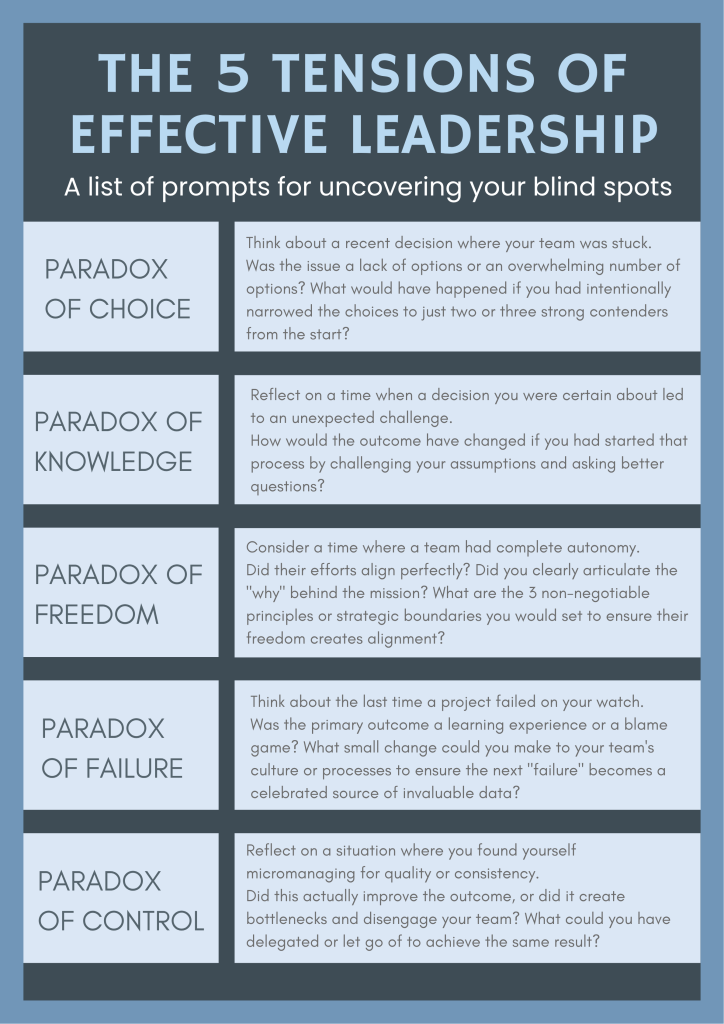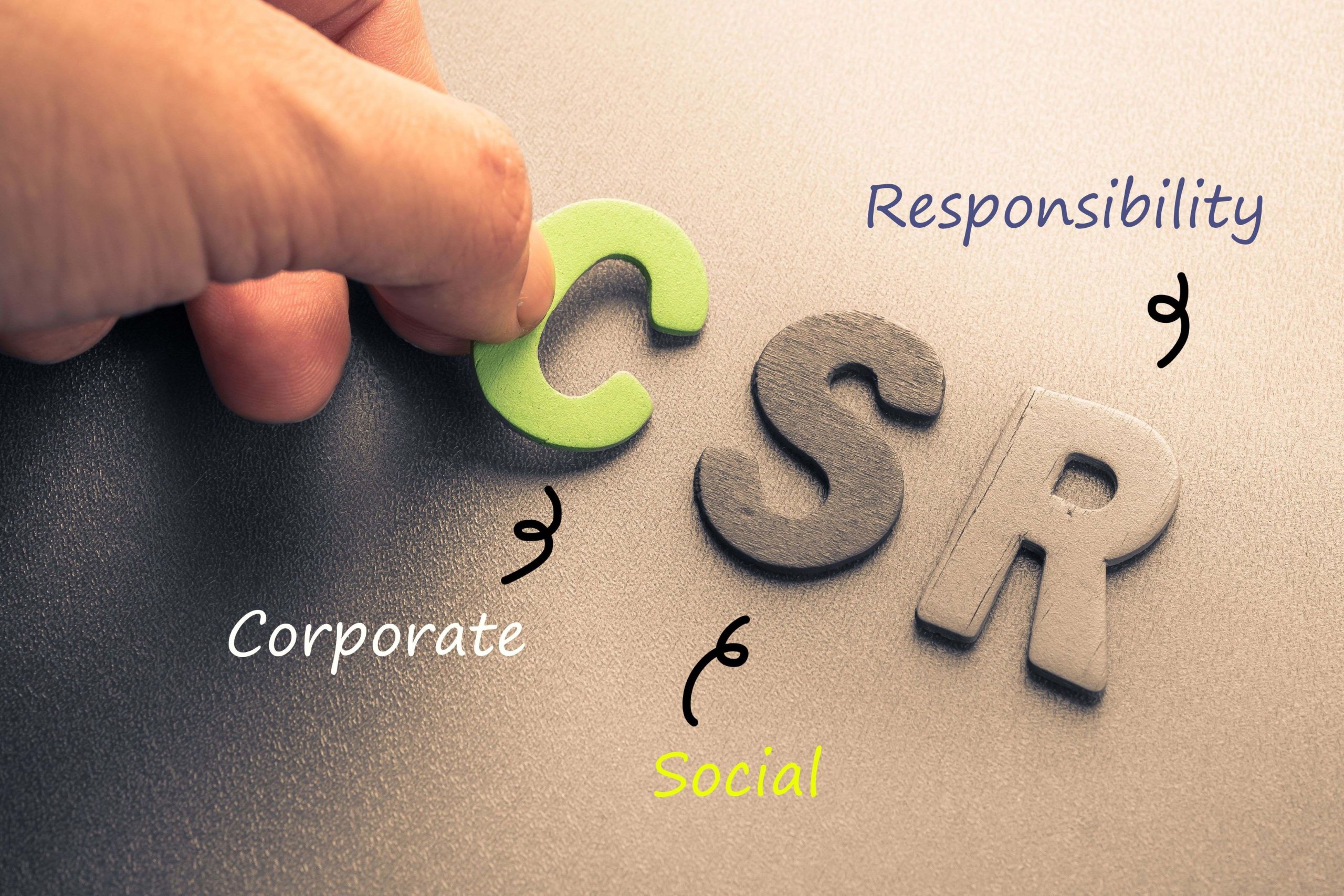Tug-of-War: Why Paradoxes Define Modern Business
A clear theme is emerging across industries and countries: business leaders are navigating a level of complexity unlike anything they’ve seen before. According to a PwC Annual Global CEO Survey, 40% of CEOs believe their organisations will not be economically viable in 10 years if they stick with their existing strategies. This is a reflection of a business environment where the traditional rules no longer apply. This sense of urgency is driven by an environment characterised by rapid technological, geopolitical, and economic shifts. The dynamic nature of modern business demands decision-making models that are more adaptive, collaborative, and fast-moving than previous approaches allow. Leading a company or team is no longer about having the right answer, but about managing competing truths.
In business, as in life, the most impactful decisions often lie in the grey area between two absolutes. Growth often requires failure. Speed demands patience. Freedom thrives on constraints. And perhaps most ironically, the more data we have, the harder it is to decide. They influence everything from how we allocate resources and hire new talent to how we develop products and build a resilient company culture. Leaders who fail to understand and embrace this inherent tension risk strategic drift, indecision, and team burnout.
In this article, we’ll explore five paradoxes that every modern leader must contend with:
- The Paradox of Choice: Having more options can lead to greater indecision.
- The Paradox of Knowledge: To learn more is to see how much more there is to learn.
- The Paradox of Freedom: Autonomy without alignment leads to chaos.
- The Paradox of Failure: Failure is essential to success yet no one wants to fail.
- The Paradox of Control: The tighter the grip, the less control you may actually have.
You’ve likely grappled with these tensions and our goal is to shift your perspective: to see these challenges as inherent tensions of modern business. As we explore each of these in detail, consider how they might manifest in your own company culture, your decision-making processes, and your approach to leadership. By learning to identify and navigate these paradoxes, you will be able to make more thoughtful decisions, empower your teams more effectively, and build an agile and resilient organisation.
1. The Paradox of Choice
More options don’t always lead to better decisions.

While we believe more options offer greater freedom, having too many options can actually lead to negative outcomes, a concept known as the paradox of choice. The term is coined by psychologist Barry Schwartz, who suggests that an abundance of choices can overwhelm individuals, making it harder to decide and often leading to regret or dissatisfaction with the final decision. With competing priorities, limited resources, and constant pressure to deliver results, leaders are often faced with a wide array of strategic decisions: which projects to prioritise, which markets to enter, which initiatives to cut. Such an overwhelming number of choices can lead to decision fatigue, effectively crippling a team’s ability to move forward. Instead of feeling liberated, leaders may experience anxiety, doubt themselves, or avoid making a choice altogether. Research has shown that more options can raise expectations to unrealistic levels, making even good outcomes feel disappointing.
True agility lies in the discipline of choosing what to ignore. In both consumer settings and workplace decisions, simplifying choices can help people feel more confident, focused, and satisfied. For business leaders, this has clear implications: whether you’re designing product lines or shaping customer experiences, more is not always better. Instead, streamlining options can improve clarity, boost confidence in decisions, and enhance both customer satisfaction and organisational efficiency. Effective leaders streamline decisions using well-defined goals and values, helping them focus on what matters most and act decisively.
So here’s the paradox:
The key to building an agile organisation is to recognise this paradox and proactively limit choices. By limiting options, leaders free their teams from decision paralysis and give them the freedom to move from move from contemplation to action.
2. The Paradox of Knowledge
True expertise isn’t having all the answers, it’s knowing the right questions to ask.

As humans, we often crave certainty. When faced with tough decisions, it’s natural to gravitate toward simple, clear answers. As leaders gain experience and dig deeper into complex systems, a new reality emerges. Every strategic decision opens up new variables, trade-offs, and unexpected consequences. This is the paradox of knowledge: the more you know, the more you realise how much you have yet to learn. This phenomenon is also known as the Dunning-Kruger effect. It’s a type of cognitive bias where people with low competence often overestimate their abilities. The danger is when their overconfidence is misinterpreted as expertise, leading a team to chase a simple but wrong solution. Conversely, experts with the depth of knowledge to see the full scope of a problem are more likely to be aware of the vast complexities and uncertainties that remain.
Being an effective leader requires the humility to sit with this uncertainty. It means letting go of the need for perfect solutions and accepting that managing ambiguity is a core part of the job. You don’t have to pretend to know all the answers. Instead, it’s more important to ask better questions, seek diverse perspectives, and remain open to new information. This can create a culture where people feel safe to say, “I don’t know, but here’s how we can find out,” which is the bedrock of innovation. This mindset fosters continuous learning, leads to sharper risk assessment, and results in better long-term decisions. Embracing the paradox of knowledge helps leaders stay grounded, focused, and forward-thinking.
So here’s the paradox:
True expertise reveals not how much you know, but the vastness of what you have yet to learn. The mark of great leadership is not in having all the answers, but in asking the right questions to guide the way.
3. The Paradox of Freedom
Greater autonomy can lead to stagnation or chaos.

Empowering employees with autonomy has become a goal of many modern organisations. Autonomy is linked to higher engagement, faster decision-making, and increased innovation. It’s also a key ingredient in attracting top talent, especially among younger generations who prioritise flexibility and purpose over hierarchy. Yet autonomy can become a liability and misalignment can lead to chaos. This idea, rooted in existential philosophy, highlights how a lack of structure can lead to anxiety and inaction. As the philosopher Jean-Paul Sartre famously put it, we are “condemned to be free”. We are forced to choose and entirely responsible for the outcomes. With this comes the burden of total responsibility and the potential for a profound lack of direction. When teams are given the freedom to act without a shared understanding of strategic priorities, their efforts often fragment. Projects duplicate, resources get pulled in conflicting directions, and the organisation is pulled apart by well-meaning but disconnected initiatives.
The paradox is clear: freedom without focus dilutes impact. While structure without freedom stifles creativity, freedom without structure dissolves coherence. Successful leaders navigate this tension by pairing autonomy with alignment. Having a clear direction and defined purpose enables a team to act with speed and conviction. The solution is not to reduce autonomy, but to clarify its purpose. Leaders must set clear guardrails, define a focused mission, and continuously communicate the “why” behind strategic decisions. In doing so, they turn scattered energy into coordinated momentum, ensuring that the freedom to act is a powerful force for progress, not a path to paralysis.
So here’s the paradox:
To foster genuine team alignment, you must empower your people with a defined purpose. Unaligned autonomy creates chaos and empowerment comes from the discipline of a shared mission.
4. The Paradox of Failure
We demand innovation while quietly punishing the mistakes that make success possible.

The paradox of failure suggests that success is often born from setbacks. Thomas Edison’s relentless experimentation to create the lightbulb and Sir James Dyson’s 5,126 failed vacuum prototypes are timeless examples that prove what doesn’t work is key to innovation. Failure is often praised as the price of progress.
Every leader understands that innovation depends on taking risks and accepting failures as learning opportunities. Failure is often praised in theory and celebrated as the price of innovation or the seed of learning. Yet, in practice, failure is often punished and penalised. Most organisational systems, from performance reviews to budget approvals, are designed to punish anything less than success. This creates a cultural fear of failure that stifles the very experimentation needed for breakthrough growth. Teams are rewarded for predictability, not curiosity. Managers are evaluated on delivering outcomes, not on what they learned when things didn’t go as planned. This creates a dangerous disconnect: companies claim they want innovation and agility, but their internal structures incentivise risk aversion and conformity.
This means that people will choose to play it safe. Experiments are watered down. Lessons from failure are hidden instead of shared. Over time, this erodes the very adaptability that organisations need to thrive in uncertainty. The paradox of failure is that while we know it’s essential for growth, we often design our systems to avoid it. Leaders who understand this tension must consciously create cultures and systems where failure is viewed as a strategic investment in learning. This means cultivating a growth mindset, where setbacks are reframed as data points for learning. By embracing failure as an inevitable part of the innovation process, businesses can turn what seems like a drawback into their greatest competitive advantage.
So here’s the paradox:
A culture that punishes mistakes will never be innovative. When leaders create a safe environment where failures are treated as a source of valuable data, they give their teams the courage to experiment and discover.
5. The Paradox of Control
The more you try to control outcomes, the less you actually influence them.

The paradox of control is the idea that the more you try to enforce control, the more you lose it. Rooted in ancient philosophy and reinforced by modern psychology, this principle warns against over-management, whether it’s micromanaging a team or rigidly steering complex systems. Attempts to control every variable often backfire, stifling creativity, slowing decisions, and eroding trust. In fast-moving business environments, such rigid control can become a liability. The most effective leaders shift from controlling people to designing environments that enable performance. By letting go of control in the right places, leaders actually gain more of it where it matters most. They foster ownership, increase accountability, and free up their own capacity to focus on strategy and long-term direction.
This paradox is especially visible in today’s tension between standardisation and personalisation.. Leaders have traditionally relied on standardised processes and products to achieve economies of scale and ensure consistent quality. Yet, advances in technology have shifted the playing field: customers now expect personalised experiences, custom solutions, and real-time responsiveness. This shift directly challenges the efficiency and uniformity that standardisation was designed to protect. As a result, leaders face a dilemma: how to preserve the benefits of standardisation while adapting to a marketplace that rewards flexibility. The way forward is to redefine control.
The key challenge for leaders is to intelligently navigate this tension and segment their operations: identifying where standardisation drives efficiency and risk management, and where flexibility is needed to deliver customer value and competitive differentiation. Standardisation still plays a vital role in building trust, reducing variability, and maintaining coherence. However, the most successful organisations will design systems that are structured but adaptive, anchored by clear principles and guardrails, capable of bending without breaking. In doing so, businesses don’t have to give up control, they find a more effective way to wield it in a complex, customer-driven world.
So here’s the paradox:
Retaining control means strategically relinquishing it. To maintain control in today’s market, companies must paradoxically embrace letting go of rigid uniformity to prioritise dynamic adaptability.
Conclusion: How Paradoxical Thinking Drives Innovation and Growth
The modern workplace is defined by paradoxes. We’re asked to move with speed, yet we can’t afford to rush decisions. We need the freedom to innovate, but also the structure to maintain alignment. We’re pressured to perform, yet we know that true growth comes from the learning found in failure. These are fundamental features of a complex, evolving business landscape.
Your calendar is full of urgent meetings and tasks, so it’s easy to miss the underlying patterns. Sometimes, the real barriers to progress are the silent tensions you’re ignoring. Take a moment to step back from the day-to-day and reflect. Where might these tensions be quietly shaping outcomes in your organisation?

Leaders and teams that do well aren’t the ones who eliminate these tensions, instead, they learn to work with them. Embracing these paradoxes is the key to becoming a more adaptive, resilient, and effective leader. They accept that there is rarely a perfect answer and progress is made by making informed decisions while remaining open to new information. This shift in perspective allows you to transform the very contradictions that frustrate others into a source of your own adaptability and strength.
Stay ahead with exclusive insights! Sign up for our mailing list and never miss an article. Be the first to discover inspiring stories, valuable insights and expert tips – straight to your inbox!




